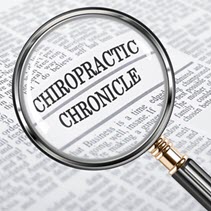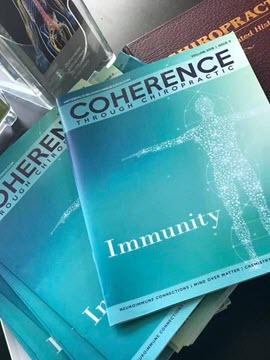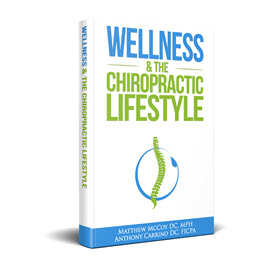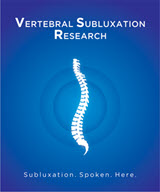Senzon Corrects Errors in Literature on Morikubo Trial
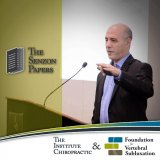
Dr. Simon Senzon presented the findings from his new research on the Morikubo trial at Barcelona Chiropractic College’s Lyceum on September 27, 2019, at Sherman College of Chiropractic’s IRAPS on October 12, 2019, and at the Chiropractic Society of Wisconsin’s Health & Wellness Summit on October 18, 2019. Each talk was unique, highlighting different aspects of this groundbreaking study.
READ MORE about Senzon's work exposing subluxation deniers here
The research was published in Volume 39 of Chiropractic History this summer. The article was titled The Morikubo Trial: Content Analysis of a Landmark Chiropractic Legal Case. The paper was coauthored with Stephen Myers, PhD, B.Med, N.D., of the NatMed Research Unit and National Centre for Naturopathic Medicine at Southern Cross University, Lismore, NSW, Australia.
A New Baseline of Empirical Facts
The landmark Morikubo trial established chiropractic as its own profession, distinct from osteopathy. It was established that chiropractic had its own science, art, and philosophy. The paper is the first attempt to locate every known primary source about the Morikubo trial. 190 primary sources were found. The paper established what likely happened at the trial. This research was undertaken because the trial is well referenced in the chiropractic literature but there is no surviving court transcript.
Reevaluating the Chiropractic Literature
After establishing the facts of the trial, Senzon evaluated 53 secondary and tertiary sources including books, chapters, peer-reviewed articles, and dissertations. All contained factual errors about the Morikubo trial.
Six classes of errors were found in these 53 documents forcing the profession to reevaluate its own literature. Thirteen documents included mistakes about basic facts like names and dates. Twenty-seven included errors about the timeline leading up to the trial. Twenty-four documents included errors involving court proceedings and testimony. Thirty-four documents were found with errors alleging the contribution of Sol Langworthy in terms of his influence on the trial and early chiropractic theory.
Many documents made assertions that were unsupported by evidence. Eleven asserted that Morris or Langworthy invented the philosophy of chiropractic as a legal argument. Eight asserted that philosophy was only important after the trial. Twenty-one asserted that B.J. Palmer abandoned D.D. Palmer’s ideas after the trial. Other documents were found to include a variety of unwarranted conclusions about the role of philosophy and theory in the chiropractic profession.
A Novel Methodology
Senzon sought an objective methodology because of the state of the literature. Articles have used the Morikubo trial to support positions for and against philosophy and vertebral subluxation. For this reason, Content Analysis was chosen[1] because it is reproducible, transparent, objective, and systematic. The key to Content Analysis is to code and simplify the data using a thematic analysis. Senzon included 70 pages of data extraction tables in the paper so that future researchers could reproduce the same findings. This is the first attempt at an evidence-based history of chiropractic using quantitative and qualitative analysis.
Themes from the Primary Sources
Several themes emerged from the analysis. Morikubo made a test case. B.J. Palmer and the first members of the Universal Chiropractor’s Association chose LaCrosse, Wisconsin, to test the medical law. LaCrosse was the frontline of the battle between the osteopaths and the chiropractors. Another theme established by the facts was that the defense relied on philosophy and principles, chiropractic’s unique analysis (nerve tracing), unique practice (the chiropractic thrust), and a distinct view of the nervous system. A final theme was that there is no evidence that Langworthy, a rival of the Palmers, had any impact on the trial or early theory.
Langworthy, Philosophy, and the Literature
The myth that Modernized Chiropractic,[2] a book published by Langworthy in 1906, and authored by O.G. Smith, was used by the defense, is false. This myth has been repeated in the literature for sixty years. A few important facts discovered in the primary sources should be highlighted:
- The only primary source document that claims Langworthy influenced the defense comes from a secondhand account written by Morikubo, where he quoted a newsletter from Langworthy.
- Three witnesses for the defense refuted the claim; Morikubo, B.J. Palmer, and Chas. Linniker.
Also, Morikubo and Linniker agreed that much of the defense was developed on the spot in response to the prosecution. More specifically, Morikubo pointed out that the defense strategy emphasized the new ideas being taught at the Palmer School in 1907. Morikubo asserted that Langworthy had no way to know what was being taught at the Palmer school in 1907. Nor was he in the courtroom and was thus unaware of the defense’s strategies.
These assertions are supported by other evidence. Lectures that B.J. Palmer delivered in 1907, were reproduced as Vol. 2 of the Palmer Green Books.[3] Some of the defense’s points included these 1907 ideas of B.J.’s about; the sympathetic nervous system, his theory of brain cell to tissue cell communication, and the idea previously articulated by D.D., B.J., and Morikubo that chiropractic had a distinct science, art, and philosophy. Another main point of the defense included D.D. Palmer’s method of nerve tracing. The defense introduced stacks of photos of nerve tracing diagrams. Morikubo was correct, none of these central lines of defense were in Langworthy’s book.
As to the role of philosophy in the defense, two witnesses, one from the defense (Morikubo), and one from the prosecution (Ashmore), stated that philosophy was central to the defense’s case. Several newspaper articles mention the discussion of philosophy and principles at the trial.
These points are important because recent literature has made erroneous claims about the trial. For example, there were articles incorrectly stating the philosophy in chiropractic was a medicolegal maneuver,[4] that the Palmer’s changed their scope after the trial,[5] and that philosophy was not important at the trial because the reporters didn’t discuss it as much as other topics.[6] The impact of a philosophical statement during a legal argument is impossible to quantify.
It is now up to the profession to evaluate what impact of documents containing errors about the trial may have had on the literature and the profession.
- Drisko, J.W. and T. Maschi, Content analysis. 2015: Pocket Guides to Social Work R.
- Smith, O., S. Langworthy, and M. Paxson, A textbook of modernized chiropractic. 1906, Cedar Rapids (IA): American School of Chiropractic.
- Palmer, B.J., The science of chiropractic: Eleven physiological: Vol. 2. 1907, Davenport, IA: Palmer School of Chiropractic.
- McGregor, M., et al., Differentiating intraprofessional attitudes toward paradigms in health care delivery among chiropractic factions: results from a randomly sampled survey. BMC complementary and alternative medicine, 2014. 14(1): p. 51.
- Kimura, M.N., R. Russell, and J. Scaringe, Professional identity at Los Angeles College of Chiropractic. Journal of Chiropractic Humanities, 2016. 23(1): p. 61-67.
- Troyanovich, S., Was Chiropractic Philosophy Created as a Ruse to Beat the Law? Dynamic Chiropractic, 2017. 35(6).

Blogs
- The Chiropractic Cartel: A Look Back at Bias in Accreditation and its Imact on Today's Profession
- Inside Montana's Chiropractic Monopoly: ACA & MCA's Brazen Board Takeover
- Concerns Grow About Control of the NY State Chiropractic Board by the ACA - Use of X-ray in NY Under Threat
- Reproductive Health Information and Chiropractic Care: Navigating New Privacy Regulations
- Navigating Substance Use Disorder (SUD) Consent: What Chiropractors Need to Know

